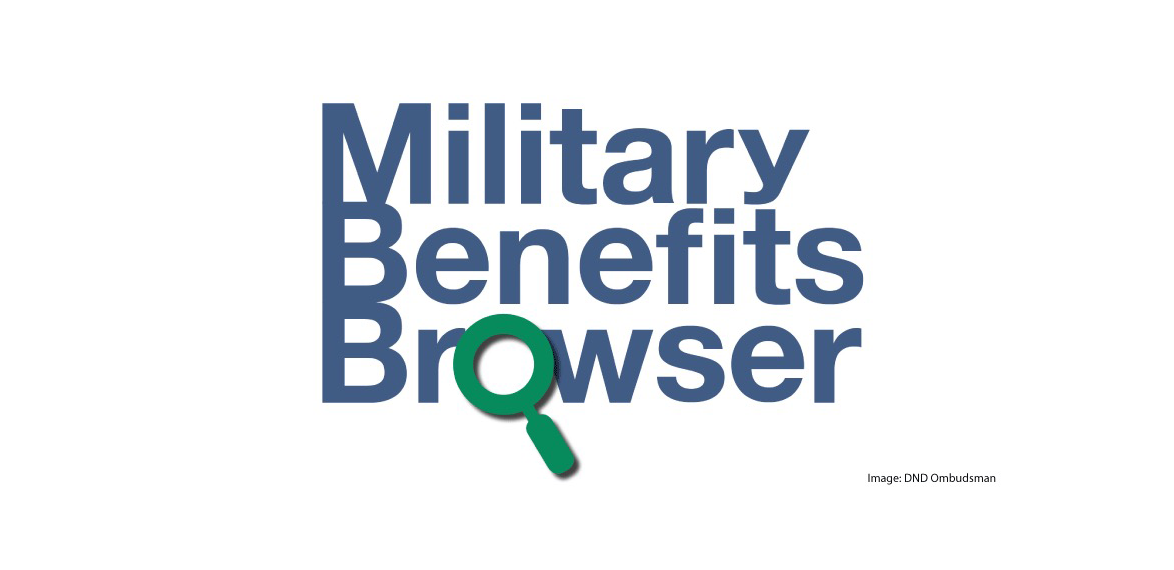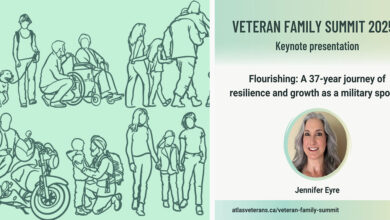Programs & Services
Benefits Browser makes it easy to browse potential benefits for Transitioning Military Members
The Benefits Browser officially launched on April 9, 2018, and it provides easily accessible information related to benefits and services for military members who are ill, injured. Even those transitioning out of the Canadian Armed Forces, their families, as well as families of the deceased.
“Members of this constituency group are often searching for information pertaining to benefits they may be entitled to during times of stress and uncertainty,” said Gary Walbourne, CAF/DND Ombudsman. “The platform relies completely upon online content, sourcing its information directly from The Guide to Benefits, Programs, and Services for Serving and Former CAF Members and their Families.”
It was important for the Benefits Browser to be made easy for the benefits seeker.
“Families can bring a printout of the Browser results to discuss with the CAF member, their local Military Family Resource Centre Family Liaison Officer or, they can call the Family Information Line to find out more about specific benefits and services,” said Walbourne.
For a step-by-step process on the benefits browser to ensure ease of use, you can find it here. It’s a 60-second video walking the benefits seeker through the process of using the browser and the 61 programs available on it.
The browser was developed in an effort to address concerns raised by serving and former CAF members, and benefits administrators. Such as:
- Overwhelming, especially for those with PTSD to scroll through 82 pages;
- Categories of CAF members in the current Guide are unspecific (for example Canadian Rangers would not know which benefits may apply to them);
- Does not show the classes of Reserve Service (which directly impact the eligibility of health care access, benefits, and services when injured or ill);
- Benefits and services not listed as per the needs of the user (program administrator registers peer support, financial, employment, health. Instead, the benefits);
- Even administrators themselves found it difficult to advise CAF members and their families on which benefits and services they may be entitled to.
“A large part of my Office’s mandate is to serve as a direct source of information, referral, and education. Since the Ombudsman’s Office opened its doors in 1998, the number one category of requests for information and complaints have been related to end of a career, including benefits,” said Walbourne.
Walbourne recognizes a complex service delivery model that does not focus on the needs of the individual, has left many members of the defence community struggling to find the benefits and services they’re entitled to.
A report called Simplifying the Service Delivery Model for Medically Releasing Members of the Canadian Armed Forces was published in September 2016, and one recommendation stated, “It is recommended that the Canadian Armed Forces lead, through a phased approach, the development of a secure web portal. The portal would contain information for all Canadian Armed Forces, Veterans Affairs Canada, and Service Income Security Insurance Plan programs and services. The portal would also enable members to input their information just once, and the portal would automatically apply for all services and benefits that would be consistent with the member’s needs.”
“Being part of the solution – the tool was created in collaboration with Director Casualty Support Management. We started consultations in Fall 2016, developed the Browser during Summer 2017 and published it in April 2018,” said Walbourne.
For CAF members unable to return to duty, the benefits browser encourages a seamless transition for themselves and their families. Also, it is a tool for Integrated Personnel Service Centre managers to aid members to return to duty or transition to civilian life.
“This benefits tool will evolve alongside our men and women in uniform, with the Ombudsman’s Office and Director Casualty Support Management working towards providing forms that will fill automatically with information from existing databases, further simplifying the process,” added Walbourne.
It combines all of the benefits available and takes the work out of sifting through all those benefits and trying to figure out what you’re eligible for.
“When trying to understand what benefits should be in place before release, or when ill or injured, each process is independent and subject to at least three separate sets of processing rules,” said Walbourne. “While some assistance may be provided from a variety of sources, it is difficult to understand the benefits, programs, and services provided by each organization.”











